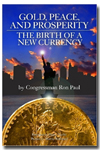 One of the burning questions regarding the recently passed bailout, and the one that almost no one has bothered to answer, is how the government intends to pay for it. Governments have three main methods by which they can raise funds: taxation, printing new money, and debt. As our $10 trillion national debt shows, the federal government has always enjoyed raising money by issuing new debt. Money is gained upfront, while the cost of repaying that debt is pushed onto future generations.
One of the burning questions regarding the recently passed bailout, and the one that almost no one has bothered to answer, is how the government intends to pay for it. Governments have three main methods by which they can raise funds: taxation, printing new money, and debt. As our $10 trillion national debt shows, the federal government has always enjoyed raising money by issuing new debt. Money is gained upfront, while the cost of repaying that debt is pushed onto future generations.
This method is especially favored today, since imposing $700 billion worth of taxes would lead to widespread public dissatisfaction. When the cost of all the recent bailouts plus the cost of all the new lending facilities the Federal Reserve has initiated are added together, we quickly reach a figure in the trillions of dollars. Even with the debt ceiling being raised to $11.3 trillion, the issuance of debt alone cannot begin to cover the cost of all the bailouts in which the government is engaged. Every indication is that the government will use both debt and inflation in its attempt to keep the economy running at full speed.
Debt financing has begun in earnest, as the national debt has increased $600 billion over the past three weeks, and most of that increase came even before the $700 billion bailout bill was passed. I fully expect that trend to continue in the near future and would not be surprised if we see another debt-limit increase slipped into another economic stimulus package that might be passed before the new year. Now that our foreign creditors are less willing to purchase our debt, what debt we cannot sell to foreigners will be monetized through the Federal Reserve, resulting in increased inflation.
In fact, money supply data for the narrowest measure, the adjusted monetary base, show an unprecedented increase, far higher than when Chairman Alan Greenspan attempted to reflate us out of trouble after the dot-com stock bubble burst. That intervention on Greenspan’s part, pumping in liquidity and driving interest rates down, led to the real estate bubble, and Chairman Ben Bernanke unfortunately seems to be following the same script as his predecessor in resorting to credit creation and low interest rates. Even were this effort to succeed, it would only delay the inevitable. In order for the economy to return to normal, the Federal Reserve must cease the creation of new credit, overvalued assets must be allowed to fall in price, and malinvested resources must be allowed to liquidate and be put to use in more productive sectors.
October 14, 2008
Dr. Ron Paul is a Republican member of Congress from Texas.










